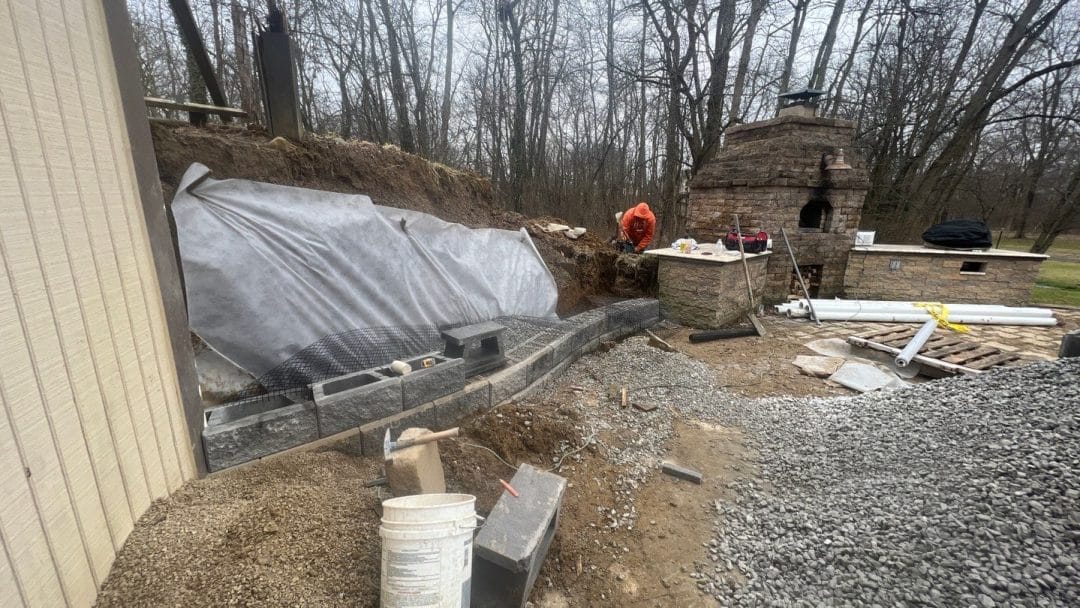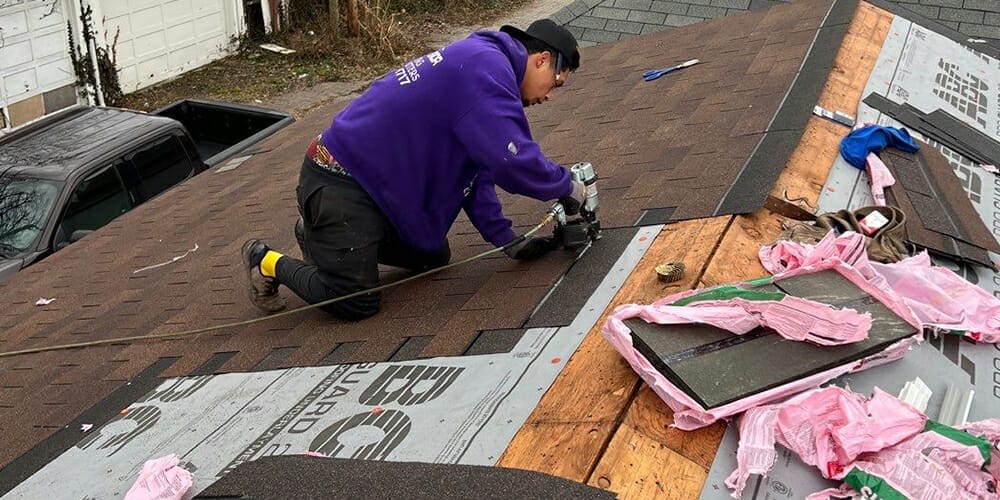Storms can wreak havoc on roofs, causing damage that compromises the integrity of your property and puts occupants at risk. Whether it’s high winds, hail, or heavy rain, addressing storm damage promptly is crucial to prevent further deterioration and costly repairs down the line. If your roof has been impacted by a recent storm, it’s essential to act swiftly and enlist the help of professional roof repair experts to assess the damage and restore your roof to its optimal condition.
Identifying Common Types of Storm Damage
Storms can cause a variety of damage to roofs, including:
- Missing or Damaged Shingles: High winds can lift, loosen, or completely remove shingles from the roof, exposing the underlying structure to water infiltration and further damage.
- Leaks and Water Damage: Hail or heavy rain can create punctures, cracks, or dents in the roofing material, leading to leaks, water intrusion, and potential mold growth.
- Dented or Bent Flashing: Flashing around chimneys, vents, and skylights may become dented or bent during severe weather, compromising their ability to prevent water from seeping into the roof.
Siding
Siding serves as both a protective barrier and an aesthetic element for your home’s exterior. Investing in professional siding installation is essential to enhance curb appeal, increase property value, and safeguard your home against the elements. Whether you’re building a new home or renovating an existing one, choosing the right siding and ensuring proper installation are crucial steps in maintaining the integrity and beauty of your property.
Storm Damage Roof Repair
Storms can cause various types of damage to roofs, including:
- Missing or Damaged Shingles: High winds can tear shingles off the roof or cause them to become loose or damaged, leaving the underlying structure exposed to the elements.
- Leaks and Water Intrusion: Hail, heavy rain, or flying debris can puncture or crack roofing materials, leading to leaks and water infiltration into your home’s interior.
- Dents or Punctures: Falling branches or hailstones can dent or puncture the roof, compromising its integrity and increasing the risk of further damage over time.
- Flashings and Seals: Storms can loosen or damage flashings around chimneys, vents, and skylights, allowing water to seep into the roof and cause leaks.
The Importance of Professional Roof Inspection and Repair
After a storm, it’s crucial to have your roof inspected by experienced professionals to assess the extent of the damage accurately. Professional roofers have the knowledge, skills, and equipment to identify hidden issues and recommend the most appropriate repair solutions. Here’s why hiring a professional for storm damage roof repair is beneficial:
- Safety: Climbing onto a damaged roof can be hazardous, especially for homeowners without proper training or equipment. Professional roofers are trained in safety protocols and have the necessary gear to work safely at heights.
- Expert Assessment: Professional roofers conduct a thorough inspection of your roof, identifying all areas of damage and developing a customized repair plan tailored to your specific needs.
- Quality Repairs: Professional roofers use high-quality materials and proven techniques to ensure durable and long-lasting repairs that restore your roof’s functionality and integrity.
- Peace of Mind: By entrusting your roof repair to professionals, you can have peace of mind knowing that the job will be done correctly the first time, minimizing the risk of future problems and costly repairs.
Commercial Roofing
Selecting the right commercial roofing contractor is crucial to the success and longevity of your roof. Here are some key factors to consider when making your decision:
- Experience and Expertise: Look for a contractor with extensive experience in commercial roofing projects and a proven track record of delivering high-quality results.
- Licensing and Insurance: Ensure that the contractor is licensed, bonded, and insured to protect yourself and your business against liability and potential risks.
- Reputation and References: Check online reviews, testimonials, and references from previous clients to gauge the contractor’s reputation, reliability, and customer satisfaction levels.
- Quality Materials and Workmanship: Verify that the contractor uses top-quality roofing materials and employs skilled craftsmen who adhere to industry best practices and safety standards.
- Communication and Customer Service: Choose a contractor who communicates effectively, listens to your needs and concerns, and provides prompt and courteous customer service throughout the project.
Insulation
Inspect and Evaluate Your Insulation Needs – Check current insulation levels in attics, walls, crawl spaces. See where it needs to be added or replaced based on climate zone recommendations.
Protect Indoor Air Quality – Carefully seal any air leaks and openings first with caulk or foam sealant to avoid insulation particles or fibers entering living spaces. Wear PPE.
Match Insulation Material to the Project – Choose loose-fill, batts, rigid boards etc. based on where it’s being installed and cost considerations. Select the right R-value for maximum efficiency.
Follow Manufacturer Instructions – Carefully calculate the amount of insulation needed for each space and material used. Carefully install per product specifications without compression or gaps.
Maintain Proper Ventilation – Make sure not to cover existing vents or block soffit vents when insulating attics so moisture and heat can still escape properly.
Consider a Professional – Getting professional insulation installation help can ensure proper coverage and efficiency compared to DIY, especially for dense packing needs.
Window Replacement
Windows play a crucial role in any home, providing natural light, ventilation, and views of the surrounding environment. However, over time, windows can become outdated, inefficient, and aesthetically unappealing. Investing in professional window replacement services is an excellent way to upgrade your home, enhance comfort, improve energy efficiency, and elevate its overall appearance. Let’s explore the benefits of window replacement and why it’s a worthwhile investment for any homeowner.
Gutter Installation
Gutter installation plays a crucial role in protecting your home from water damage. By effectively channeling rainwater away from your roof and foundation, gutters prevent leaks, erosion, and potential structural issues.
Factors to Consider:
- Climate: Consider factors like snowfall, heavy rain, and potential for high winds when choosing gutter material and size.
- Roof size and pitch: Larger roofs require longer gutters, and steeper pitches necessitate larger gutter capacity.
- Budget: Prices vary depending on material, length, installation complexity, and additional features like gutter guards.
- DIY vs. Professional Installation: While gutter installation might seem like a DIY project, professional installers ensure proper alignment, attachment, and flashing for optimal water drainage and prevent future leaks.






